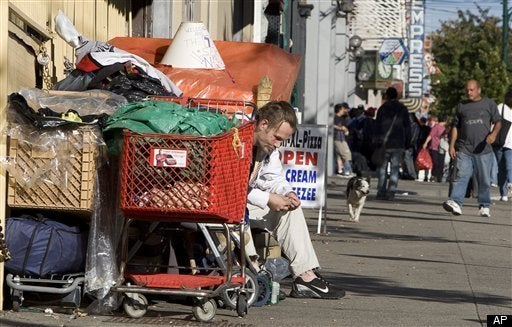
On December 27, eight young people in their late teens and early twenties died in a blazing fire in the abandoned New Orleans warehouse where they slept to stay warm. Like many homeless and runaway young adults, these eight had eschewed the adult homeless shelters, and instead fended for themselves. They saw themselves not as homeless without hope, but as artists and musicians--young people with goals, dreams, and promising futures.
While researching a report on New York City youth leaving foster care, I heard this sentiment echoed again and again by young people who had spent time on the streets as well as the adults working with them. Homeless youth know they're at a critical juncture, one that can lead to many different outcomes. Like all young people, they have ambitions and hopes. Many view the instability of their lives as a way station, a stop on route to someplace better. Frequently, they're right.
But too often, services designed for the homeless funnel young adults into the same programs for men and women who are decades older and have been struggling with chronic mental illness or battling addictions for just as long. The programming they provide reflects that, with rigid rules that don't allow for young adults' proclivity for boundary-pushing and their trial-and-error style of learning. At most shelters, for instance, if you miss curfew, you're out of a place to sleep.
Increasingly, researchers of brain development and human behavior view the late teens and early 20s to be a transitional period between adolescence and adulthood, one with a distinct set of needs and traits. To lump young adults with older ones does a disservice to both.
In New York City, a handful of programs are designed specifically to engage transition-aged young people with no place to live. The best take into account young adults' need to experiment, and strike a balance between letting them learn from mistakes and getting multiple second chances. They recognize that unlike older adults, many homeless young people have never lived on their own before, and need lots of hand-holding mastering the elementary skills of day-to-day adult living: shopping for groceries, filling out a job application, even cleaning a bathroom. These programs assume the young adults are on the path to becoming independent, and take a goal-oriented approach, rewarding each new skill acquired.
But many of these programs designed for homeless and runaway youth have had their budgets threatened to be slashed under the Bloomberg administration, despite the fact that they have long been filled to capacity, with youth shelters like Covenant House regularly turning away people looking for a place to sleep.
One 2007 survey estimated that there were 3,800 homeless people between the age of 16 and 24 on any given night in New York City. Of those, about 1,600 had spent the night sleeping outside, at a transportation hub, in a car, bus, train, or another vehicle, or--like the young people who perished in New Orleans--in an abandoned building. To not offer ample programs to truly engage these thousands of young people is not only to miss a critical opportunity to give them the supports and services they need to avoid homelessness and dependence on public assistance for the long haul. It is to alienate them, nudging them further into danger and away from their dreams.